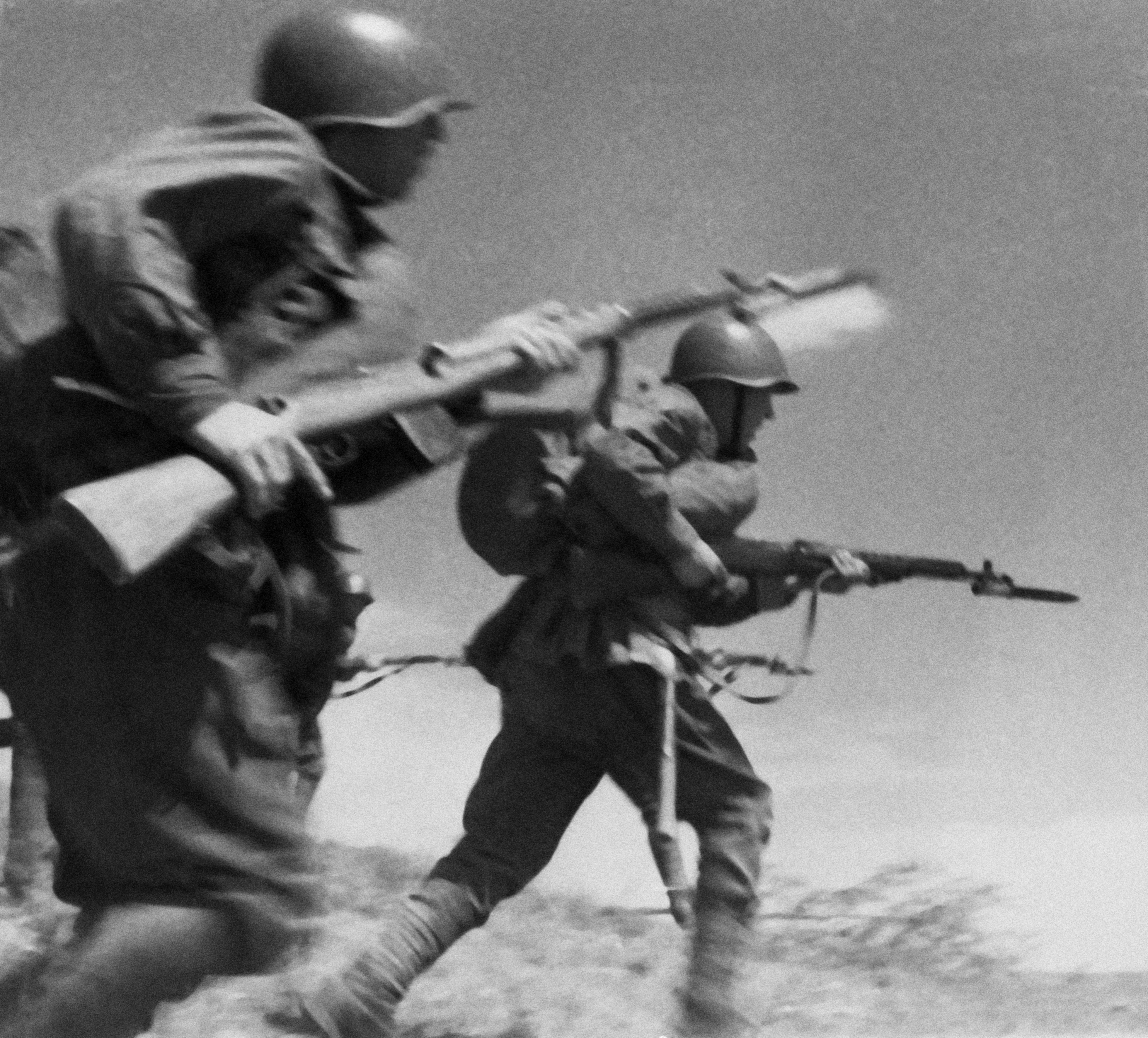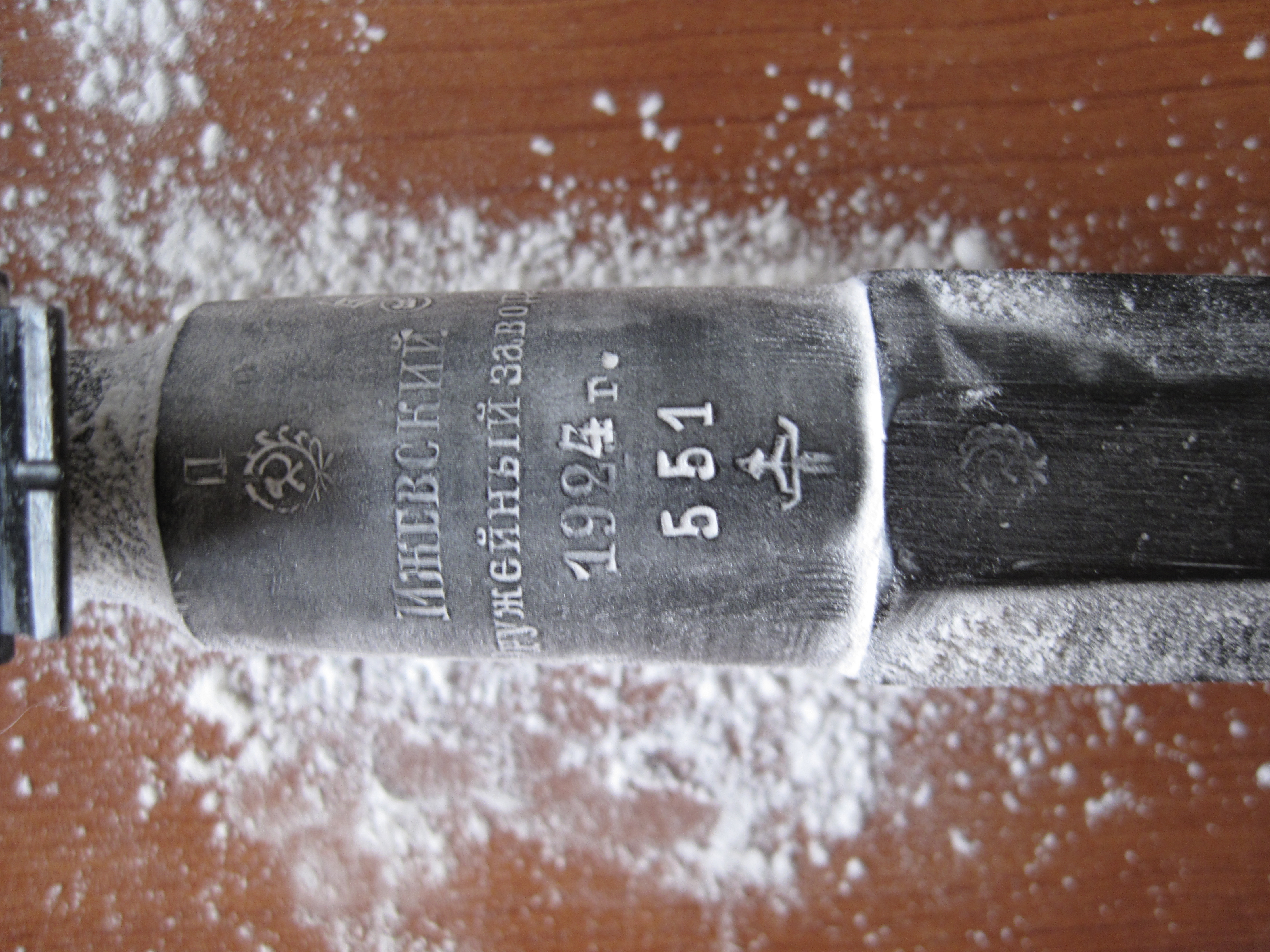|
SVT-38
The SVT-40 () is a Soviet semi-automatic battle rifle that saw widespread service during and after World War II. It was intended to be the new service rifle of the Soviet Red Army, but its production was disrupted by the German invasion in 1941, resulting in a change back to the Mosin–Nagant rifle for the duration of World War II although both rifles served concurrently. History In the early 1930s, the Soviet Union requested the development of a semi-automatic rifle to replace the Mosin-Nagant, taking inspiration from the Mexican Mondragón rifle. The design was left up to two individuals, Sergei Simonov and Fedor Tokarev. Simonov, who had experience in developing the Fedorov Avtomat, created a prototype for the AVS-36 in 1931. The rifle was used during the Winter War but was removed from service in 1941 due to design flaws. SVT-38 In 1938, Tokarev's rifle was accepted for production, under the designation ''SVT-38'' with hopes that it would become the new standard- ... [...More Info...] [...Related Items...] OR: [Wikipedia] [Google] [Baidu] |
AVS-36
The AVS-36 (; ''Avtomaticheskaya vintovka Simonova obraztsa 1936 goda (AVS-36)''; "''Automatic rifle Simonov model 1936 (AVS-36)''") was a Soviet automatic rifle which saw service in the early years of World War II. It was among the early selective fire infantry rifles (capable of both semi and full-automatic fire) formally adopted for military service. History Origins The designer, Sergei Simonov, began his work on a gas-operated self-loading rifle in 1930. The first prototype was ready in 1931 and appeared promising. Three years later a trial batch of an improved design was made. In 1935, a competition between Simonov's design and a rifle made by Fedor Tokarev was held. The Simonov rifle emerged as the winner and was accepted into service as the AVS-36. The AVS-36 was first seen in public in the 1938 May Day parade in Moscow, when it was displayed by the marching 1st Rifle Division. The American public became aware of it when it was covered in the August 1942 issue of th ... [...More Info...] [...Related Items...] OR: [Wikipedia] [Google] [Baidu] |
Semi-automatic Rifle
A semi-automatic rifle is a type of rifle that fires a single round each time the Trigger (firearms), trigger is pulled while automatically loading the next Cartridge (firearms), cartridge. These rifles were developed Pre-World War II, and were used throughout World War II. Rifles are firearms designed to be fired while held with both hands and braced against the shooter's shoulder for stability. Externally similar shotguns can fire multiple Shot (pellet), pellets simultaneously through a smoothbore, while rifle Gun barrel, barrels are Rifling, rifled to spin-stabilize individual bullets. The actions of semi-automatic rifles use a portion of the fired cartridge's energy to eject the spent casing and load a new round into the Chamber (firearms), chamber, readying the rifle to be fired again. This design differs from manually operated rifles such as Bolt action, bolt-action and Lever action, lever-action rifles, which need to chamber a cartridge manually before firing again, and ... [...More Info...] [...Related Items...] OR: [Wikipedia] [Google] [Baidu] |
Izhmash
JSC Kalashnikov Concern (; ), known until 2013 as the Izhevsk Machine-Building Plant (; ), is a Russian defense manufacturing concern and joint-stock company headquartered in the city of Izhevsk in the Republic of Udmurtia as well as the capital city of Moscow. The concern designs and produces a wide range of civilian and military weapons including assault rifles, sniper rifles, designated marksman rifles, machine guns, squad automatic weapons, hunting rifles, shotguns, guided artillery projectiles, and a wide range of other precision weapons including remote controlled weapon stations, unmanned vehicles, and military robots. The Kalashnikov Concern produces about 95% of all small arms in Russia and supplies to more than 27 countries around the world, making it the largest firearm manufacturer in Russia. Notable products include the Kalashnikov (AK) assault rifle series, the RPK light machine gun series, the Dragunov SVD semi-automatic sniper rifle, the SKS semi-automati ... [...More Info...] [...Related Items...] OR: [Wikipedia] [Google] [Baidu] |
Battle Rifle
A battle rifle is a service rifle chambered to fire a fully powered cartridge. The term "battle rifle" is a retronym created largely out of a need to differentiate automatic rifles chambered for fully powered cartridges from automatic rifles chambered for intermediate cartridges, which were later categorized as assault rifles. Battle rifles were most prominent from the 1940s to the 1970s, when they were used as service rifles. While modern battle rifles largely resemble modern assault rifle designs, which replaced battle rifles in most roles, the term may also describe older military full-power semi-automatic rifles such as the M1 Garand, SVT-40, Gewehr 41, Gewehr 43, Type 4 rifle, Type 4, FN Model 1949, and MAS-49 rifle, MAS-49. History World War I Semi-automatic First examples of semi-automatic fully powered-cartridge rifles used in World War I are the Meunier rifle, Meunier A6, Fusil Automatique Modèle 1917 in 8×50mmR Lebel and the Winchester Model 1910 in .401 Wincheste ... [...More Info...] [...Related Items...] OR: [Wikipedia] [Google] [Baidu] |
Fedor Tokarev
Fedor Vasilievich Tokarev (; – 6 March 1968) was a Russian weapons designer and deputy of the Supreme Soviet of the USSR from 1937 to 1950. Career Outside the former Soviet Union he is best known as the designer of the Maxim–Tokarev light machine gun, the Tokarev TT-30 and TT-33 self-loading pistol, and the Tokarev SVT-38 and SVT-40 self-loading rifle, both of which were produced in large numbers during fighting on the Eastern Front of World War II. For his contributions to Soviet arms design Tokarev received the Hero of Socialist Labor award and the USSR State Prize. He also designed the prototype of the FT-1 / ФТ-1 panoramic camera (FT stands for: Fotoapparat Tokareva / Фотоаппарат Токарева). Biography At age of 14 he began work in his father's shop.colonel N. Elshin. A talented inventor // "Soviet Military Review", No. 6, June 1981. pages 36-38 * 1888 – Admitted to the Military Vocational School at Novocherkassk; age 17 * 1892 – Gradu ... [...More Info...] [...Related Items...] OR: [Wikipedia] [Google] [Baidu] |
World War II
World War II or the Second World War (1 September 1939 – 2 September 1945) was a World war, global conflict between two coalitions: the Allies of World War II, Allies and the Axis powers. World War II by country, Nearly all of the world's countries participated, with many nations mobilising all resources in pursuit of total war. Tanks in World War II, Tanks and Air warfare of World War II, aircraft played major roles, enabling the strategic bombing of cities and delivery of the Atomic bombings of Hiroshima and Nagasaki, first and only nuclear weapons ever used in war. World War II is the List of wars by death toll, deadliest conflict in history, causing World War II casualties, the death of 70 to 85 million people, more than half of whom were civilians. Millions died in genocides, including the Holocaust, and by massacres, starvation, and disease. After the Allied victory, Allied-occupied Germany, Germany, Allied-occupied Austria, Austria, Occupation of Japan, Japan, a ... [...More Info...] [...Related Items...] OR: [Wikipedia] [Google] [Baidu] |
Mosin–Nagant
The Mosin–Nagant is a five-shot, Bolt action, bolt-action, Magazine (firearms), internal magazine–fed military rifle. Known officially as the 3-line rifle M1891, in Russia and the former Soviet Union as Mosin's rifle (, ISO 9: ) and informally just mosinka (), it is primarily chambered for the 7.62×54mmR Cartridge (firearms), cartridge. Developed from 1882 to 1891, it was used by the armed forces of the Russian Empire, the Soviet Union and various other states. It is one of the most mass-produced military bolt-action rifles in history, with over 37 million units produced since 1891. In spite of its age, it has been used in various conflicts around the world up to the present day. History Initial design and tests During the Russo-Turkish War (1877–1878), Imperial Russian troops armed mostly with single-shot Berdan rifles suffered heavy casualties against Ottoman Empire, Ottoman troops equipped with Winchester rifle#Model 1866, Winchester 1866 repeating rifles, particula ... [...More Info...] [...Related Items...] OR: [Wikipedia] [Google] [Baidu] |
Bayonet
A bayonet (from Old French , now spelt ) is a -4; we might wonder whether there's a point at which it's appropriate to talk of the beginnings of French, that is, when it wa ... , now spelt ) is a knife, dagger">knife">-4; we might wonder whether there's a point at which it's appropriate to talk of the beginnings of French, that is, when it wa ... , now spelt ) is a knife, dagger, sword, or Spike bayonet, spike-shaped melee weapon designed to be mounted on the end of the gun barrel, barrel of a rifle, carbine, musket or similar long gun, long firearm, allowing the gun to be used as an improvised spear in close combat.Brayley, Martin, ''Bayonets: An Illustrated History'', Iola, WI: Krause Publications, (2004), pp. 9–10, 83–85. The term is derived from the town of Bayonne in southwestern France, where bayonets were supposedly first used by Basques in the 17th century. From the early 17th to the early 20th century, it was an infantry melee weapon used for both offensive and ... [...More Info...] [...Related Items...] OR: [Wikipedia] [Google] [Baidu] |
FN FAL
The FAL (, English: Light Automatic Rifle) is a battle rifle designed in Belgium by Dieudonné Saive and manufactured by FN Herstal and others since 1953. During the Cold War the FAL was adopted by many countries of the NATO, North Atlantic Treaty Organization (NATO), with the notable exception of the United States. It is one of the most widely used rifles in history, having been used by more than 90 countries. It received the title "the right arm of the free world" from its adoption by many countries that identified as part of free world. It is chambered in 7.62×51mm NATO, although originally designed for the Intermediate cartridge, intermediate .280 British. A license-built version of the FAL was produced and adopted by the United Kingdom and throughout the Commonwealth of Nations, Commonwealth as the L1A1 Self-Loading Rifle. History In 1946, the first FAL prototype was completed. It was designed to fire the intermediate 7.92×33mm Kurz cartridge developed and used by the ... [...More Info...] [...Related Items...] OR: [Wikipedia] [Google] [Baidu] |
Tilting Bolt
Tilting bolt action is a type of locking mechanism often used in self-loading firearms and, rarely, in straight-pull repeating rifles. Essentially, the design consists of a moving bolt driven by some mechanism, most often a piston with gas pressure from the gas port behind the muzzle. The bolt drops down into receiver recess and locks on bolt closing. Tilting the bolt up and down locks-unlocks in the breech. This tilting allows gas pressure in the barrel from firing the gun to lower to safe levels before the cartridge case is ejected. For handgun design, the tilting barrel as used in the Browning, is a similar operating mechanism. The tilting bolt has lost favor in contemporary firearm design of rifle caliber to locking systems such as the rotating bolt due to reasons such as complexity in manufacture and expense in resources, increased wearing of the surfaces acted on, higher demands on the receiver due to transfer of locking stresses to it (e. g., it can't be made from alu ... [...More Info...] [...Related Items...] OR: [Wikipedia] [Google] [Baidu] |








